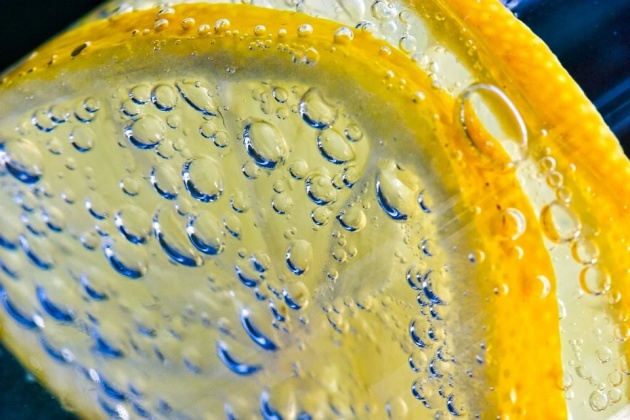Drinking water is essential to a healthy lifestyle.
-Stephen Curry
When my lover and I walked beneath the heated sun of the midday, he immediately collapsed. The doctors prescribed the IV solution dextrose. I stood by an hour at the emergency room in nervousness because he looked very pale and dry. Why is that?
Whether minor diseases or serious, we immediately complain if our body is not feeling good. The question is, how often do we drink water? Do we have a fluid-electrolyte balance?
Normally in humans, water intake is balanced by water output. If the intake of water exceeds the output, edema results. If the output of water exceeds the input, dehydration may occur.
Water Balance

The body replenishes its water supply by the ingestion of liquids (which are primarily, if not wholly, water) by the ingestion of foods such as meats, vegetable, and fruits, all of which contain a very high percentage of water and by metabolic process taking places normally in the body. When carbohydrates, fats, and proteins are metabolized, electrolyte is produced. Approximately 14 mL of water is formed for every 100 kcal energy released by the oxidations of foods. The oxidation of 100 grams of carbohydrates produces 50 grams of water; the oxidation of 100 grams fats produces 100 grams of water; the oxidation of 100 g protein produces 50 g of water.
The normal input of fluid in the body is approximately 2500 mL per day. The body loses water through the kidneys as urine, through the skin, as perspiration, through the lungs, as exhaled moisture, and through the feces.The total of these water losses should approximate that of the water intake, 2500 mL per day. However, the amounts of water loss by these methods may vary considerably. For example, the amount of moisture lost through the skin (by evaporation of perspiration) and through the lungs increases during vigorous muscular exercise, with an increased respiratory rate, in a hot, dry environment, during a fever, and when the skin receives severe burns.Conversely, the amount of water lost through the kidneys increases following the ingestion of a large amount of water within a short period of time. It also increases because of the presence of large amounts of waste products of the bloodstream. However, when the body loses excess water through vomiting and/ or diarrhea, the output of water through the kidney is immediately lessened.
Distribution of Water in the Body

The water of the body is considered to be distributed in two major areas: intracellular (within the cells) for 55 percent and extracellular (outside the cells) for 45 percent. The extracellular water, in turn, can be divided into intravascular (plasma): fluid within the heart and blood vessels (7.5 percent), interstitial and lymph: fluid outside the cells (20 percent) with dense connective tissue on cartilage and bone (15 percent), transcellular fluids: extracellular fluid connections (including the salivary glands, thyroid glands, gonads, mucus membranes of the respiratory and gastrointestinal tracts, kidneys, liver, pancreas, cerebrospinal fluid, and fluid in the spaces within the eyes about 2.5 percent).
Approximately 55 percent of the weight of an adult male and 50 percent of an adult female is water.
The principal difference between the blood plasma (the intravascular fluid) and the interstitial fluid is in the protein content. Proteins cannot pass through membranes and so they remain in the blood vessels. Thus, the protein content of the interstitial fluid is very low compared to that of the intravascular fluid, although the soluble electrolytes in each are approximately the same.
There are distinct differences in salt concentration in the intracellular and extracellular fluids.
The extracellular water in the dense connective tissue, cartilage and bone and the extracellular water in the transcellular fluid do not readily interchange and the electrolytes with the rest of the body water. The rest of the body water- intracellular, intravascular, interstitial, and lymph- freely moves from one area to one another within the body.
Electrolyte Balance
The ions are divided into two groups- cations (positively charged ions) and anions (negatively charged ions). Concentrations of anions and cations are expressed in units of mmol/L, or using the former unit of milliequivalents per liter (mEq/L). The unit milliequivalent measures the chemical and physiologic activity of an ionized substance, the electrolyte. Since milliequivalents are based on the term ions, the term milliequivalents represent the number of charged particles or the number of both positive and negative charges present in a solution of electrolytes. Recall that the number of positive charges must always equal the numbers of negative charges.
Osmotic activity depends on the numbers of particles present in a solution regardless of whether they carry a charge or not. Thus, sodium ions, potassium ions, and chloride ions cause osmotic pressure, but so does glucose, which is nonelectrolyte; that is, it carries no charge.
Osmotic activity is expressed by the unit of milliosmol, which is a measure of the amount of work that is dissolved particles can do in drawing fluid through the semipermeable membrane. Osmotic activity is measured by means of an instrument called an osmometer.
Conclusion:

My lover collapsed along the street because he was dehydrated. We walked about 10 kilometers in the middle of the day without bringing water. He lost water through perspiration. There was an excessive output of fluid in the input that caused his body to dehydrate. Water is the most powerful element to combat upcoming diseases, yet, there must be always a balance. If you plan to hike in midst of El Nino, bring lots of water to avoid dehydration. The doctors also prescribed Gatorade. This sports drink is famous around the world that every athlete needs to have. It contains sugar. Its most effective ingredients are sodium and potassium that are electrolytes.
Loss of water
Main articles: Volume contraction and Dehydration
Volume contraction is a decrease in body fluid volume, with or without a concomitant loss of osmolytes. The loss of the body water component of body fluid is specifically termed dehydration.
Sodium loss approximately correlates with fluid loss from extracellular fluid, since sodium has a much higher concentration in extracelluliar fluid (ECF) than intracellular fluid (ICF). In contrast, K+ has a much higher concentration in ICF than ECF, and therefore its loss rather correlates with fluid loss from ICF, since K+ loss from ECF causes the K+ in ICF to diffuse out of the cells, dragging water with it by osmosis.
Read more on this source
Courtesty of the video: Chef Mama Rose via Youtube
**************************
All rights reserved, 2019.




